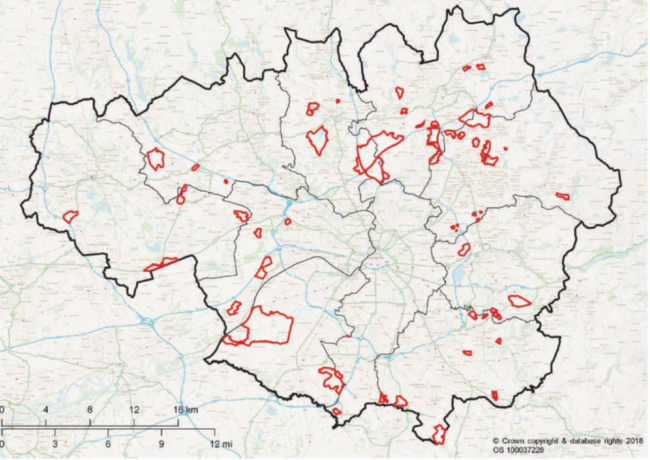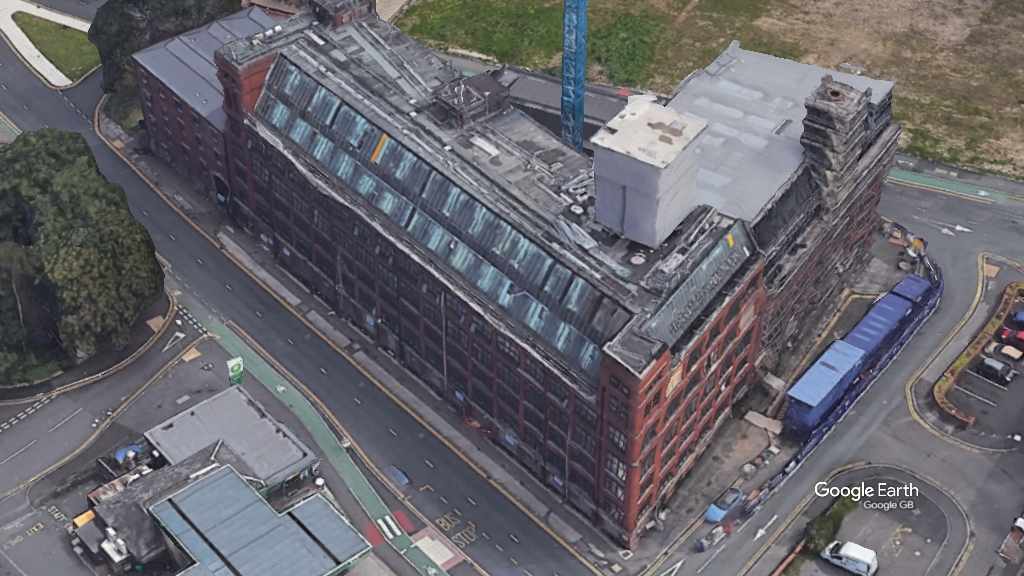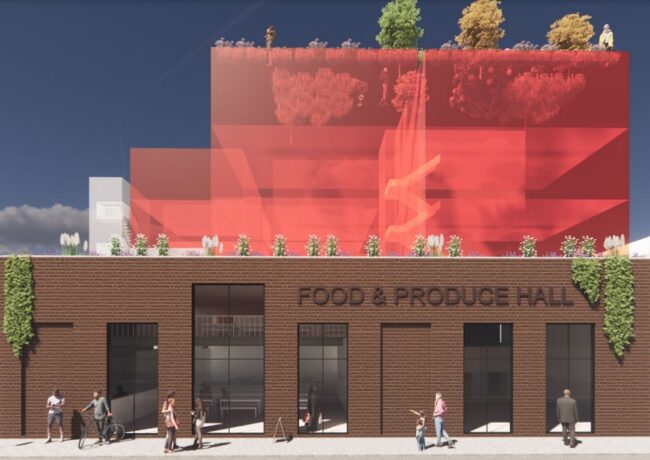GMSF rewrite targets 201,000 homes
The long-awaited Greater Manchester Spatial Framework outlines the sites, including some Green Belt release, which will be used to deliver a minimum of 201,000 new homes by 2037, mainly focused in Manchester, Salford, Trafford and Oldham, alongside 65m sq ft of employment space.
Of the homes, 50,000 are to be classed as affordable, with at least 30,000 available as social housing. The planned employment development includes 24m sq ft of offices, and 42m sq ft of warehouses.
The GMSF draft has been published ahead of a meeting of the Greater Manchester Combined Authority on Friday, where leaders from all 10 boroughs will be required to sign-off the plan to go out to consultation.
- For a summary of each borough’s site allocations, read from page 16 of this report: GMSF overview.pdf
- View the GMSF draft in full here
The first draft of the GMSF, published in 2016, set a target of 227,000 homes over the next 20 years, and included the release of 12,100 acres of Green Belt, which was massively unpopular with the public and was spread unevenly across the 10 boroughs. Burnham tapped into this wave of discontent when he campaigned to be Mayor in early 2017, and when he took post in May of that year he commissioned Salford Mayor Paul Dennett to oversee a rewrite.
Burnham at one point said he wanted the revised plan to have “no net loss” of Greater Manchester’s Green Belt, however this was seemingly impossible without also significantly reducing housing targets. The City Region has to deliver more than 200,000 homes in the period to meet the conditions of the Government’s devolved housing deal, while closer to home, the Mayor faced push-back from some of GM’s councils, who argued that delivering a minimum number of homes wouldn’t enable economic growth in the areas that most need it, and that targets should be more ambitious.
Launching the plan this morning, Burnham admitted he “would have liked to have gone further” on reducing the level of Green Belt release, but said “it was made impossible by Government forcing Manchester to use outdated ONS population figures.” Ultimately, “ending up with no plan would be more dangerous for our Green Belt.”
Compared to the previous iteration, the release of Green Belt has been cut by half. There are still some significant releases though, including around the M62 corridor for employment development, and Timperley Wedge in Trafford, for residential.
As part of the Mayor’s commitment to focus more on the regeneration of Greater Manchester’s towns, Burnham has announced plans for a consultation on a Mayoral Development Corporation for Stockport, supported by a business case from Deloitte, while Cushman & Wakefield has been appointed to draw up a strategic regeneration framework for 3,000 homes to the west of the town centre.
Alongside the GMSF, the City Region also published a report on the first five years of projects planned within its 2040 Transport Strategy. Many of the 65 projects are already under way or in feasibility stages, such as Metrolink’s Trafford Park Line; the purchase of 27 trams; an upgrade of Salford Central railway station; £160m walking and cycling infrastructure across all 10 districts; and expanding the electric vehicle charging network. The plan also explores some longer term initiatives, such as introducing tram-trains to connect the Metrolink network to as far out Warrington.
Reactions: “Rather like May’s Brexit deal, risks satisfying no-one”
Kevin Whitmore, director, BECG, said: “Just getting the plan published is a big achievement for the Greater Manchester Combined Authority but rather like the Prime Minister’s Brexit deal, the new GMSF risks satisfying no one. A reduced housing target will inevitably lead to doubts about the City Region’s growth ambitions, while campaigners will question whether the Mayor has delivered on his campaign pledges.
“Whilst the Mayor can rightly claim some radical policies in the new GMSF – especially around fracking – there remains substantial Green Belt allocations which will continue to cause a headache for political leaders as we approach this year’s local elections. There is likely to be enough for each local authority to take as a ‘win’ from the previous draft but expect opposition parties across Greater Manchester to campaign hard against the allocations that remain.”
Jonathan Reynolds, Labour MP for Stalybridge & Hyde, said: “The green belt sites in Stalybridge and in Mottram have been removed from development plans entirely. Andy Burnham has identified town centre development as being key to this, and the success of projects like Summer’s Quay in Stalybridge town centre have shown there is a strong market for town centre residential developments.
“The major green belt site in the constituency is therefore the proposal for a new garden village behind Hattersley station in Hyde. Combining the principles of the successful new towns, this is an attempt to do planning in a completely different way – delivering new infrastructure like transport improvements and public services- at the same time as a genuine mix of housing types. I think this is vastly superior to a lot of generic developer estates being delivered without any infrastructure or public say in what type of housing is built.
“Disappointingly, both the Bowlacre and Apethorn Lane sites are still in the plan. This is my only major objection to this new draft and in my response I will continue to request the removal of the Apethorn Lane site.
“Whilst I know some people oppose all new housing, it’s important to remember this would simply transfer the power to developers who can win sites on appeal if the land supply for housing is found to be insufficient in any Borough. The majority of concerns I received were more about the types of housing that would be built and whether there would be new infrastructure to support these. Therefore I think these plans are a real improvement, whilst still making substantial progress to alleviating the housing crisis and boosting the local economy.”
Gary Halman, senior director of planning consultant GVA How, said: “It’s good that we have, after some considerable delay, a draft document setting out the latest proposals of the GMCA. It’s a major document which will take some time to critically analyse. Housing numbers have fallen to around 201,000 from the previously proposed 227,000 and this, coupled with a fresh approach to sites and delivery has been an important contributor to the Mayor’s stated intent to reduce the net loss of Green Belt- which is now around 50% of that proposed in 2016.
“A ‘brownfield preference’ is also a strong theme, with town centres being seen as a potential source of new housing though interestingly, and perhaps bizarrely, not at the expense of displacing existing commercial floorspace. This implies higher densities both in towns and around public transport hubs.
“And the ‘core area’ of Manchester and Salford city centres is singled out for a major role in future housing provision; Manchester itself accounting for some 25% of the overall new housing target, said to be capable of delivering some 50,000 new homes. As most of these will inevitably be apartments, this will be closely linked to the ability of the market to continue to sustain this form of development over future years.
“Critical to achieving regeneration of brownfield sites and hence the levels of housing delivery which the Plan aspires to is land remediation and supporting infrastructure. To that extent achievement of the Plans’ objectives is directly linked to Government support and finance being made available to unlock this type of land for viable redevelopment, which will be major area of uncertainty, particularly in a post Brexit world.”





Please let me have the details of the plans for Oldham. I have found nothing apart from a fast bus service from Bowker Vale. Hopefully and sincerely, I have missed something.
By David Hibbert, BA(Hons.), Cert.Ed.